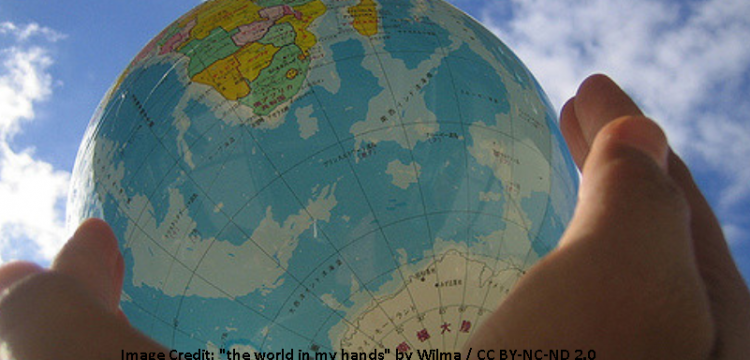The case for internationalisation of higher education
Patrick Blessinger and Barbara Cozza
St. John’s University (NYC), USA
Not only has globalisation had a tremendous impact on the development of the world, but its impact on the internationalisation of higher education over the past few decades has been equally remarkable. Many different theories, perspectives and conceptions of globalisation exist to help explain its impact on political, economic and socio-cultural development at different levels.
Although the history of globalisation is one of continual ebb and flow, the trajectory has been, nonetheless, a steady move towards greater interconnectedness and interdependence. It is difficult to predict what long-term effects the Great Recession (2008-10) and the current upswing of isolationist sentiments will have on international higher education in the coming years. Regardless, it is more important now than ever that students learn how to develop as global citizens.
Given the uncertainty around globalisation’s impact on higher education, educational institutions are looking for creative ways to manage the risk associated with globalisation, such as developing global university partnerships.
In support of the United Nations Sustainable Development Goals, Barbara Cozza and I, along with other educational scholars, present a set of research studies in the forthcoming book series, University Partnerships, and discuss how partnerships are helping universities to internationalise their programmes and develop students into global citizens.
The tides of global change
Since the late 19th century, the world has experienced three waves of modern globalisation. The first wave occurred from about 1870 to 1914. This was followed by a severe post-World War I retreat from globalisation that lasted until the end of World War II.
During this wave the internationalisation of higher education progressed very slowly as the world retreated into isolationism and protectionism after World War I and during the Great Depression. During this period, internationalisation was mainly a marginal activity, consisting chiefly of study abroad by those with the financial means to do so.
After World War II, globalisation resurged in a second wave that occurred from about 1945 to 1980 with increased flows of trade, communication and migration facilitated by intergovernmental agreements and organisations such as the United Nations, the World Bank, the International Monetary Fund and the General Agreement on Tariffs and Trade (predecessor of the World Trade Organization).
During this wave the internationalisation of higher education grew as developed democratic countries focused on international development as a model for a) promoting democratic values and human rights, b) improving cross-cultural relations and world peace, and c) enhancing global economic growth and political stability.
In this wave universities began to play a central role in serving as a means to widen access to higher education for all segments of society in order to address social justice violations and to create a pipeline for more graduates, needed for economic expansion.
During this wave colleges and universities made great strides in developing new fields of studies and in making many breakthroughs in scientific and technological research. It was during this wave that the Humboldtian model of integrating the tripartite mission of research, teaching and service with learning became the predominant model for higher education institutions globally.
The third wave occurred from about 1980 to the present. This wave has been characterised by increased participation in international trade from developing countries, the ongoing collapse of colonial and communist regimes around the world and rapid advances in global communication, transportation and scientific technologies.
During this wave the internationalisation of higher education continued to surge as a response to more intensified globalisation, as well as the ongoing democratisation of higher education.
During this wave higher education focused increasingly on enrolment growth by attracting international students through new programmes, new ways to provide and deliver education, new global partnerships and a greater focus on enhancing institutional reputation and quality.
During this period, universities adopted principles of management science, for instance, in order to better manage a more complex and rapidly changing educational environment. The predominant university model of this wave might best be characterised as what Ron Barnett, emeritus professor of higher education at the UCL Institute of Education, University College London, calls the entrepreneurial university.
Globally focused teaching and learning
In the context of a highly globalised world, university partnerships have become a priority for international strategic plans.
Common goals of such partnerships are to increase the number of students studying abroad, to increase the number of foreign students studying at the home university and to increase the number of cross-border research partnerships. Such partnerships are based on active collaboration to achieve specific objectives that are of mutual benefit to all parties.
These types of collaborations make good sense because they represent a form of risk management as they allow all parties to achieve outcomes they would not be able to achieve alone. Such partnerships might include student and faculty exchange programmes, visiting researcher programmes, joint research programmes, joint degree programmes, academic programme franchising and other types of collaborative provisioning of courses and programmes.
One of the chief aims of such partnerships is to increase international engagement. At many universities, such international partnerships are vital to fulfilling their tripartite mission. It is important to note, however, that there is no one-size-fits-all internationalisation model.
Developing partnerships is driven by several factors at the macro, meso and micro levels. In the current global environment where political, economic and social events can change rapidly, international higher education can be dynamic and filled with challenges and obstacles.
It is therefore important to be flexible and creative when designing and managing such programmes, while making sure they also align with the United Nations Sustainable Development Goals. Hans de Wit and colleagues provide an overview of the internationalisation of higher education in a European context, for example. As with any field, higher education must modernise and respond to a continually changing environment.
In spite of the dynamic nature of international higher education, colleges and universities must remain committed to widening access, improving employability of graduates and improving the quality of teaching and learning.
Internationalisation is more than just student mobility and study abroad. Rather, as Hans de Wit discusses in an article on the misconceptions of internationalisation, the main purpose of internationalisation programmes should be to enhance the quality of research, teaching and service, and consequently, to improve learning outcomes and the well-being of society.
Patrick Blessinger is an adjunct associate professor of education at St John’s University in New York City, United States, and chief research scientist for the International Higher Education Teaching and Learning Association. Barbara Cozza is an associate professor of education and programme director at St John’s University, New York City, USA.
Note: this article also appears in the University World News blog at http://www.universityworldnews.com/article.php?story=20171010115112828
Suggested Citation:
Blessinger, P. & Barbara, B. (2017). The case for internationalisation of higher education, Higher Education Tomorrow, Volume 4, Article 10, https://www.patrickblessinger.com/the-case-for-internationalisation-of-higher-education
Or
Blessinger, P. & Cozza, B. (2017). The case for internationalisation of higher education, University World News, http://www.universityworldnews.com/article.php?story=20171010115112828
Copyright © [2017] Patrick Blessinger and Barbara Cozza
Disclaimer
Opinions expressed in this article are those of the author, and as such do not necessarily represent the position(s) of other professionals or any institution.




